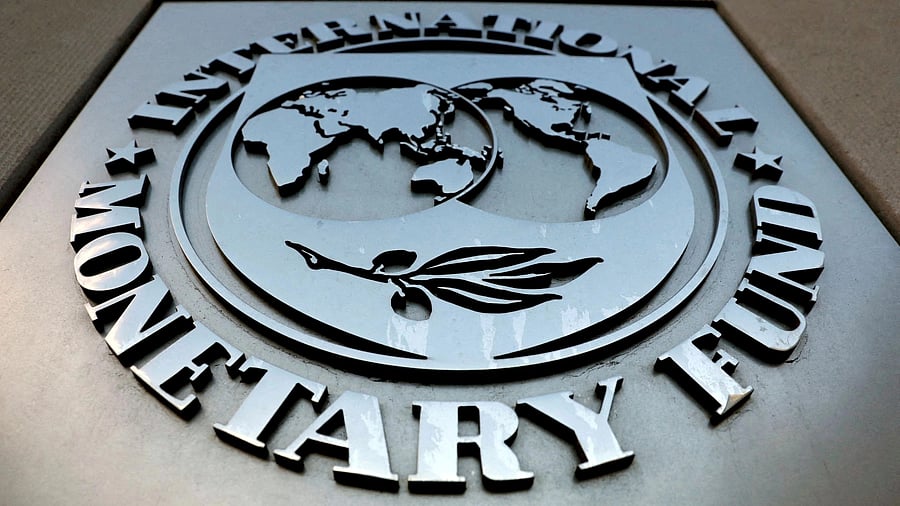
The International Monetary Fund (IMF) logo.
Credit: Reuters Photo
Around 5 per cent of banks globally are vulnerable to stress if central bank interest rates remain higher for longer, despite the easing of turmoil in the sector in recent months, the International Monetary Fund (IMF) said on Tuesday.
A further 30 per cent of banks - including some of the world's largest - would be vulnerable if the global economy enters a period of low growth and high inflation, or "stagflation," the IMF also said in its semi-annual Global Financial Stability Report.
The warning was based on a new, tougher global stress test that the IMF applied to around 900 lenders in 29 countries following the collapse earlier this year of California-based Silicon Valley Bank, Switzerland's Credit Suisse Group and two other US lenders.
"There's a weak tail of banks in many countries," Tobias Adrian, director of the IMF's Monetary and Capital Markets Department, said in an interview conducted last week prior to the attacks by Palestinian Islamist group Hamas on Israel and retaliatory air strikes on the Gaza Strip.
The IMF adjusted this year's stress test to probe the impact of its baseline economic scenario of higher interest rates for longer, as well as the possibility of consumers yanking deposits. Its "severe-but-plausible" scenario envisages the global economy entering "stagflation."
"Under the baseline, it's about 5 per cent of banks that are relatively weak in terms of their capital. And in severe stress, that number goes up to 30 per cent or sometimes higher," Adrian said.
The IMF did not identify the banks that could be in trouble if those economic circumstances arose, but they included both small and large lenders.
"There's certainly some large institutions that could be under pressure in some scenarios, absolutely," Adrian said, though he noted the recent U.S. banking crisis showed how even smaller bank failures could undermine financial stability.
Governments need to aggressively supervise their banks, and examiners must be more "intrusive" and direct lenders must take more "timely and conclusive" corrective action, the IMF said. It also said there was an "urgent need" to improve bank resilience by boosting capital levels.
The report was issued as global financial leaders gathered in Marrakech, Morocco, for the IMF and World Bank annual meetings.
Inflation battle
The US Federal Reserve's interest rate hikes in 2022 and 2023 led to heavy losses on the government bond portfolios held by regional US banks, which in turn spooked depositors and led to a string of failures in March and early May of this year.
The US central bank held its benchmark overnight interest rate steady in the 5.25-5.50 per cent range last month, but signaled one more quarter-percentage-point hike would likely be needed before the end of this year to cement inflation's downward path, and that the policy rate would probably end 2024 above 5 per cent.
Weak banks were considered those whose capital levels fell by more than five percentage points over the course of the IMF's stress test, or below a floor of 7 per cent.
Under its baseline, 55 banks representing 4 per cent of global assets proved weak. Under the stagflation scenario, that number expanded to 215 banks holding 42 per cent of assets.
The report urged central banks to stick with higher rates until inflation cools, but warned that some investors appear to be too confident that inflation will fall quickly. "History cautions against declaring victory too soon and prematurely easing monetary policy," the report noted.